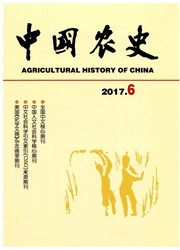

 中文摘要:
中文摘要:
关于大豆的起源,学术界历来众说纷纭。考古数据的积累对厘清大豆起源及其传播过程有重要意义。本文报道近年来黄河中下游几处遗址的大豆属遗存新数据,分析南洼等遗址大豆属种子的形态演变和驯化程度。南洼遗址二里头文化至汉代.大豆属种子尺寸呈现逐步增大的发展趋势。从大豆属种子的历时发展来看,东盘、南洼和陈庄遗址的野大豆均处于最小值范围,从龙山至西周时期仍有一定量的大豆种子显示偏“野”的特征。南洼遗址二里头和殷墟时期大豆的尺寸落在野生与驯化的中间区域,陈庄遗址西周时期大豆的尺寸则已处于较大值内。综合其他夏商时期的大豆数据来看.这一时期大豆的栽培和驯化一直持续着,并且大豆种子的生物性状演变较为稳定,并未像龙山时代的大豆属种子一样可以聚合为两大类。至汉代,南洼遗址大豆的数据已经非常明显占据了最大值,农耕工具的发展可能深化了大豆种子大粒型的发展。
 英文摘要:
英文摘要:
The origins of the Soybean is always controversial and archaeological data would play an im- portant role on this field. In this paper, new data from several sites in Middle and Lower Yellow River will be reported for further discussion of the morphological development and domestication of Clycine seed. The seed from Nanwa site showed a gradually increasing trend in size. Wild soybean seeds from Nanwa, Dongpan and Chenzhuang site are at a minimum range. A certain amount of Clycine seeds from I~ngshan Culture to Western Zhou Dynasty still reveal "wild" characteristics. Soybean Seeds from Erlitou Culture to Yinxu period of Nanwa site are in the region between wild and domesticated soybean, while seeds of Chenzhuang site has larger value than other sites. The cultivation and domestication of soybean were continued and the morphological character- istics was stable in Xia and Shang period. Seeds of Nanwa site of Han Dynasty occupy the maximum interval and the development of root cultivation technology could strengthened the domestication traits of the seed.
 同期刊论文项目
同期刊论文项目
 同项目期刊论文
同项目期刊论文
 Reconstructing the food structure of ancient coastal inhabitants from Beiqian village: Stable isotop
Reconstructing the food structure of ancient coastal inhabitants from Beiqian village: Stable isotop The early Holocene archaeobotanical record from the Zhangmatun site at the northern edge of the Shan
The early Holocene archaeobotanical record from the Zhangmatun site at the northern edge of the Shan An important military city of the Early Western Zhou Dynasty: Archaeobotanical evidence from the Che
An important military city of the Early Western Zhou Dynasty: Archaeobotanical evidence from the Che 期刊信息
期刊信息
